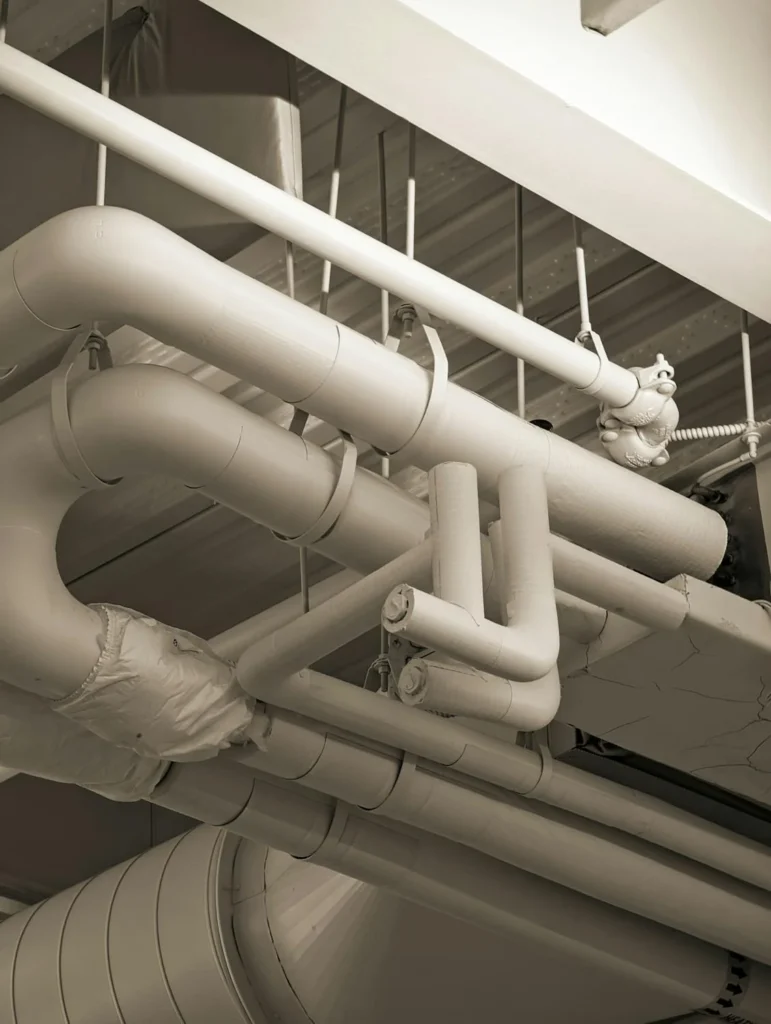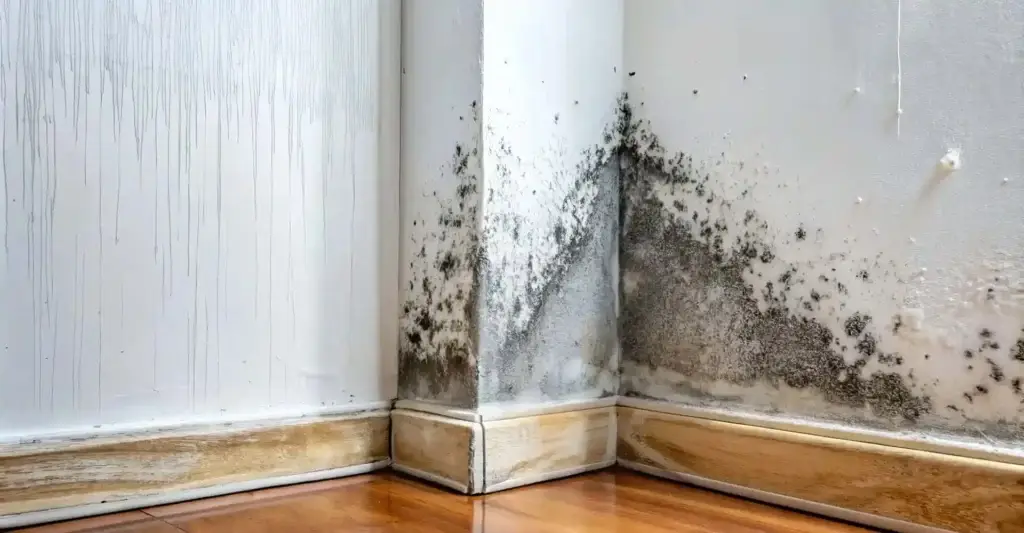Quick answer
Yes, professional mould removal services are generally worth the cost due to the significant health risks and costly property damage mould can cause if left untreated. Unlike often ineffective DIY methods that only address surface mould and risk spreading spores, professionals offer advanced detection of hidden mould, industrial-grade cleaning to eliminate roots and airborne spores, and crucial long-term prevention strategies by addressing underlying moisture sources. Investing in professional services ultimately protects your health, preserves property value, and prevents more extensive, expensive damage in the future.
Considering professional mould removal?
Mould is more than just an unsightly nuisance, it’s a serious threat to both health and property. In the UK, where damp and humid conditions are common, mould infestations are increasingly prevalent in homes and businesses alike. According to a study by the English Housing Survey, approximately 4% of homes in England suffer from damp-related issues, many of which contribute to mould growth.
Given the potential dangers of mould exposure and the costly structural damage it can cause, homeowners and business owners often ask: Are professional mould removal services worth it? Below, we explore the risks of mould, the limitations of DIY removal, and why professional services offer long-term benefits.
The hidden dangers of mould: Health & property risks
Mould is not just an aesthetic issue, it’s a living organism that thrives in damp environments and can spread rapidly if not addressed. The risks associated with mould fall into two key categories:
1. Health hazards
Mould releases spores into the air that can be inhaled, leading to a variety of health issues. Vulnerable groups such as children, the elderly, and those with respiratory conditions are especially at risk. According to the NHS, prolonged exposure to mould can cause:
- Respiratory issues (e.g., wheezing, coughing, asthma flare-ups)
- Skin irritation and rashes
- Eye and throat irritation
- Sinus congestion and headaches
- Allergic reactions
In severe cases, exposure to toxic mould (such as Stachybotrys chartarum, commonly known as black mould) has been linked to neurological issues and immune system suppression.
2. Structural damage to property
Mould isn’t just damaging to health, it also weakens the materials it grows on. If left untreated, it can:
- Compromise wooden structures, drywall, and insulation
- Weaken plaster and wallpaper
- Cause permanent stains and odours
- Lower the value of a property
Since mould feeds on organic materials like wood and paper, it can progressively eat away at the structural integrity of a building, leading to costly repairs.
DIY mould removal: Why it often fails
Many homeowners attempt to tackle mould themselves, using off-the-shelf sprays, bleach, or other household cleaners. While this may seem like a cost-effective solution, DIY mould removal often falls short for several reasons:
1. Surface cleaning doesn’t remove the root cause
Most DIY methods only remove visible mould but fail to address the deeper-rooted issue—excess moisture. Mould spores can penetrate deep into walls, carpets, and insulation, making it difficult to eliminate them fully without professional-grade solutions.
2. Risk of spreading mould spores
Scrubbing or wiping mould-infested areas can release thousands of microscopic spores into the air, allowing the infestation to spread to previously unaffected areas. Without containment methods like HEPA filtration and negative air pressure systems, DIY efforts can make the problem worse.
3. Health risks without proper protective equipment (PPE)
Without proper respiratory masks, gloves, and protective suits, attempting to remove mould can expose individuals to harmful spores and mycotoxins, leading to adverse health effects.
What professional mould removal involves
Professional mould removal services provide a comprehensive approach to identifying, removing, and preventing mould. Here’s what sets them apart from DIY methods:
1. Advanced mould detection & moisture assessment
Professional services use specialised equipment like thermal imaging cameras and moisture meters to detect hidden mould growth and pinpoint moisture sources that need addressing.
2. Industrial-grade cleaning & treatment
Mould remediation experts use a multi-step approach that includes:
- HEPA vacuuming to remove loose spores
- Antimicrobial treatments to kill mould at the root level
- ULV (Ultra Low Volume) fogging to disinfect and remove airborne spores
- Encapsulation techniques to prevent future regrowth
3. Prevention & long-term protection
Mould removal is only effective if it prevents recurrence. Professionals identify and rectify the underlying cause, such as poor ventilation, leaks, or high humidity, and may recommend solutions such as dehumidifiers or improved insulation.
How much does professional mould removal cost in the UK?
The cost of professional mould remediation depends on several factors, including the size of the affected area, the severity of the infestation, and the extent of structural damage. On average, in the UK:
- Small area treatment (e.g., one room): £200 – £500
- Medium-sized property treatment: £500 – £2,000
- Severe infestations requiring extensive work: £2,000 – £10,000+
While this may seem costly, addressing mould professionally prevents further damage and medical expenses, making it a worthwhile investment in the long run.
When should you call a professional?
If you notice any of the following signs, it’s best to seek professional assistance:
- Persistent musty odour despite cleaning
- Mould returning after repeated DIY attempts
- Widespread mould growth covering a large area
- Signs of structural damage (warping, discolouration, damp walls)
- Health symptoms worsening in household members
What’s the verdict?
Given the health risks, potential for costly property damage, and the likelihood of mould regrowth after DIY attempts, hiring a professional mould removal service is a smart investment. Professional services ensure:
- Safe and complete removal of all mould and spores
- Long-term prevention strategies to stop recurrence
- Healthier indoor air quality for you and your family
For UK homeowners and businesses dealing with mould problems, the best course of action is early intervention. The sooner you address the issue with professional help, the less damage and expense you’ll face in the long run.
If you’re dealing with a mould problem and want expert assistance, contact Ideal Response for a free consultation.
Professional mould removal: Frequently asked questions
What are the main risks of mould in my home?
Mould poses significant risks to both health and property. Health hazards include respiratory issues, skin irritation, headaches, and allergic reactions, especially for vulnerable individuals. For property, mould can cause structural damage to wood, drywall, insulation, and plaster, leading to permanent stains, odours, and decreased property value.
Can I remove mould myself with DIY methods?
While DIY methods like sprays or bleach may remove visible mould, they often fail to address the underlying moisture source and deep-rooted spores. This can lead to mould returning quickly or even spreading spores to other areas, potentially worsening the problem and exposing you to health risks without proper protective equipment.
How do professional mould removal services differ from DIY?
Professional services offer a comprehensive approach using specialised equipment for hidden mould detection and moisture assessment (e.g., thermal imaging). They employ industrial-grade cleaning methods like HEPA vacuuming, antimicrobial treatments, and ULV fogging, along with encapsulation techniques. Crucially, they identify and rectify the root cause of mould to prevent recurrence, ensuring long-term protection and healthier indoor air quality.
What factors determine the cost of professional mould removal in the UK?
The cost varies based on the size of the affected area, the severity of the infestation, and the extent of any structural damage. In the UK, small area treatments might range from £200-£500, medium-sized properties £500-£2,000, and severe infestations requiring extensive work could exceed £2,000 to £10,000+.
When should I call a professional mould removal service?
You should contact a professional if you notice a persistent musty odour, mould returning after DIY attempts, widespread mould growth covering a large area, signs of structural damage (like warping or damp walls), or if household members are experiencing worsening health symptoms linked to mould exposure. Early intervention is key to minimizing damage and costs.
What specific health problems can mould exposure cause?
Prolonged mould exposure can lead to various health issues, including respiratory problems (like wheezing, coughing, and asthma flare-ups), skin irritation and rashes, eye and throat irritation, sinus congestion, headaches, and allergic reactions. In severe cases, exposure to certain toxic moulds may be linked to neurological issues and immune system suppression.
What advanced techniques do professional mould removal services use?
Professionals use advanced techniques beyond simple cleaning, including specialised detection equipment like thermal imaging cameras and moisture meters to find hidden mould. For removal, they use industrial-grade cleaning methods such as HEPA vacuuming for spores, antimicrobial treatments, ULV (Ultra Low Volume) fogging for airborne disinfection, and encapsulation techniques to prevent future regrowth.

Chris Hedges - Head of Marketing
With over 25 years' experience, Chris is adept at defining and driving strategy, while also enjoying hands-on operational delivery. He believes in an equal blend of creativity and analytical scrutiny, always finding inventive ways to achieve objectives, underpinned by evidence. Chris’s philosophies are simple: don't overcomplicate, always prioritise customer experience, and bend the rules just enough to cut through the noise and drive momentum and growth.





















